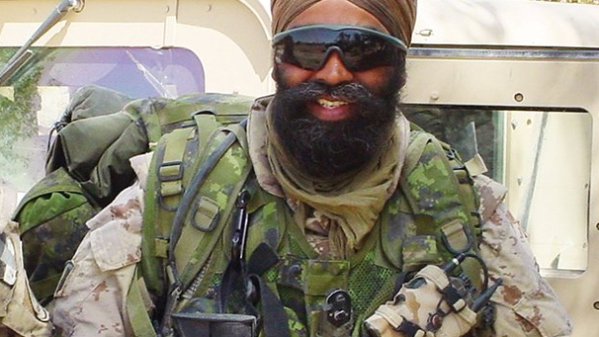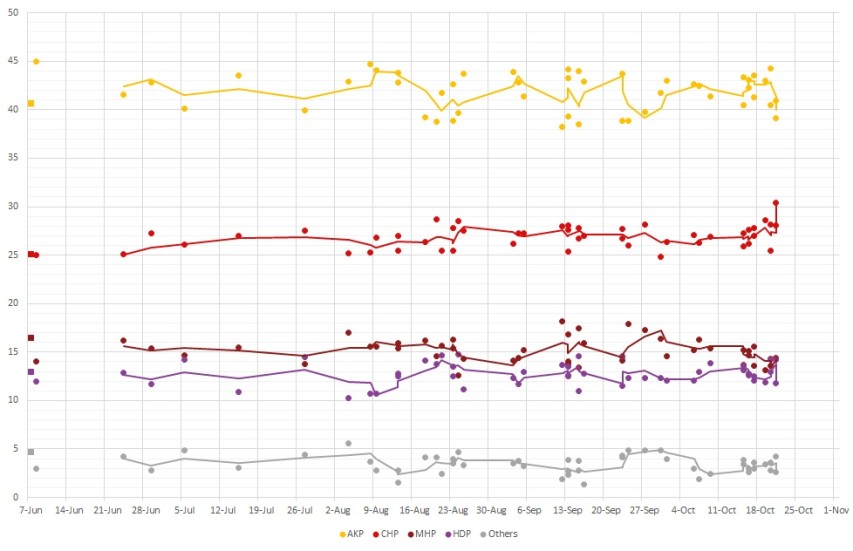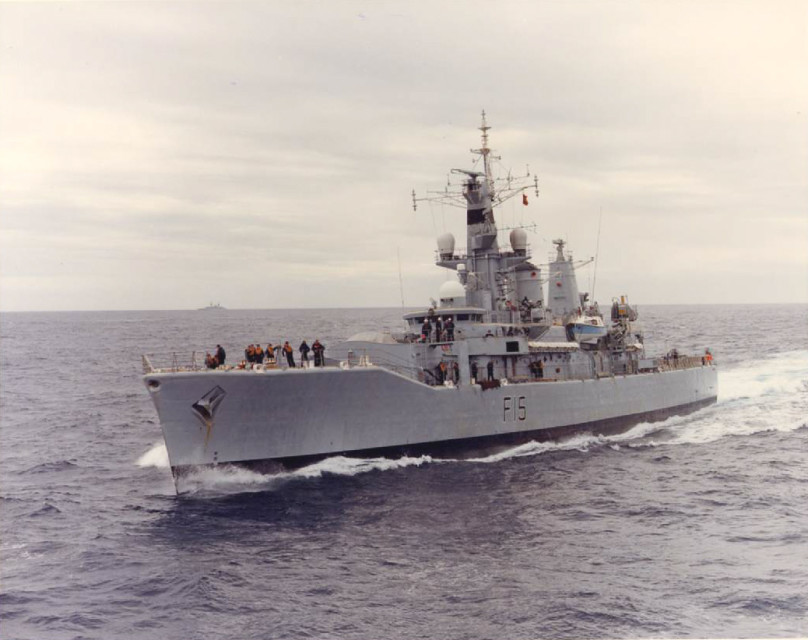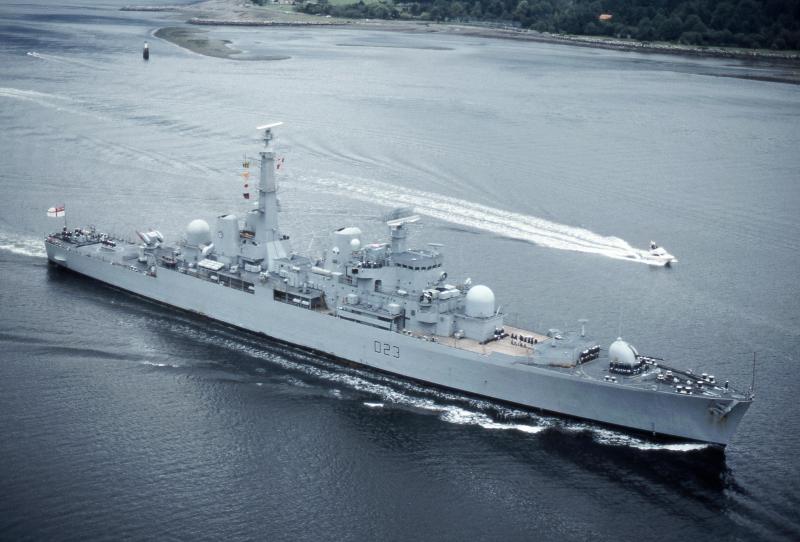Published on 5 Nov 2015
For the third time the Italians had tried to conquer the Austrian positions at the Isonzo front and for the third time they had failed. And like the other defeats before, the Third Battle of the Isonzo came with an extreme amount of casualties due to the difficult terrain in the Alps. At the same time, Lord Kitchener visits the front in Gallipoli and realises that evacuation is the only logical decision to make. On the Western Front, the French had suffered well over 200.000 casualties during the autumn offensives at Artois and in the Champagne.
November 6, 2015
The Third Battle of the Isonzo – French Despair On The Western Front I THE GREAT WAR Week 67
Canada’s new Minister of National Defence
In the National Post, Adrian Humphreys provides a look at the new defence minister in Justin Trudeau’s cabinet:

Many defence ministers pose for photos with military hardware, but few pull off the true badass combat stance as well as Harjit Singh Sajjan — draped in flak jacket and camouflage, gripping an assault rifle on an actual battlefield.
Sajjan was, until recently, a decorated Lieutenant-Colonel in the Armed Forces, the first Sikh Canadian to command an army regiment.
“Command breaks down barriers because no one looks at what you look like when the bullets are flying,” he said in 2011. “Having to carry your, you know, wounded soldiers off the battlefield, not just wounded, but the ones that have been killed and place them into a helicopter, nothing prepares you for that.”
Sajjan, sworn in Wednesday as Canada’s new Minister of National Defence, was, in military lingo, “a trigger puller.”
He was deployed to Bosnia-Herzegovina and three times to Afghanistan, for which he was awarded one of the military’s highest recognitions, the Order of Military Merit, for reducing the Taliban’s influence in Kandahar Province.
“He has a taste for the reality of war and that’s very, very important,” said David Bercuson, director of the Centre for Military, Security and Strategic Studies at the University of Calgary.
“He will have seen the aftermath of the effect of war on some of our men and women, which is a major issue with veteran’s affairs,” said Bercuson.
[…]
He served as a reservist, and was deployed with the Canadian peacekeeping forces to Bosnia in 1996.
In 2006 he served in Afghanistan, playing a key intelligence advisory role to Brig.-Gen David Fraser in the successful Operation Medusa offensive against the Taliban. He returned to Afghanistan in 2009 and 2011.
Rising to the rank of reserve lieutenant-colonel, he was named commander of the B.C. Regiment (Duke of Connaught’s Own), in 2012.
I’m pleased that Trudeau managed to find someone to fill this cabinet post who has actual military experience in the field (as opposed to a former general or admiral). I hope he can fight his political corner to get the Canadian Forces the updated equipment they so desperately need, even if the F-35 is not going to be part of the package (Trudeau explicitly promised to drop the F-35 purchase during the election).
Turkish politics, post-election
Austin Bay looks at Turkey’s domestic political situation following the re-election of Recep Erdoğan’s Justice and Development Party:
The threat to Turkish democratic institutions is a man notoriously jealous of Ataturk, current president Recep Tayyip Erdoğan. The snap election gave Erdoğan and his Justice and Development Party, AKP, overwhelming control of parliament (316 of 550 seats). The AKP had controlled parliament since 2002, but in the June 7 election it lost its one-party majority. Political haggling among opposition parties, including Ataturk’s Republican Peoples Party, the CHP, failed to produce a coalition government; a new election was necessary.
However, in the intervening month’s domestic terrorist incidents, the fitful war with the Islamic State in the Levant and Syria’s violent chaos dominated Turkish politics.
Erdoğan portrayed himself as the only leader capable of addressing Turkey’s deteriorating security situation. Domestic security certainly diminished; why it did stirs angry accusations. Erdoğan’s political opponents maintain that he used the violence to solidify political support. His more vicious critics accuse him of intentionally permitting violence. For example, they argue his government could have prevented the Oct. 10 terror bombing of a peace march in Ankara, now attributed to ISIL. Over 100 people were murdered in that attack.
Is it an over the top conspiracy theory-type accusation? Possibly. Erdoğan himself, however, believes over the top conspiracy theories, and he uses conspiratorial doubt and fear as political tools. His record for jailing journalists and intimidating political opponents associated with his alleged conspiracies is fact, not theory. The election didn’t assuage his fears — it ignited another surge of arrests. On Nov. 3, police arrested scores of people associated with Erdoğan critic and Muslim cleric Fethullah Gulen. At one time Gulen supported Erdoğan and the moderate Islamist AKP. However, Gulen broke with Erdoğan over credible charges of corruption within Erdoğan’s governing circle.
Daniel Pipes isn’t convinced that the terror stampeded voters in Erdoğan’s direction (especially Kurdish voters), and he suspects fraud in the election results:
Like other observers of Turkish politics, I was stunned on November 1 when the ruling Justice and Development Party (Adalet ve Kalkınma Partisi, or AKP) was reported to have increased its share of the national vote since the last round of elections in June 2015 by 9 percent and its share of parliamentary seats by 11 percent.
The polls had consistently shown the four major parties winning about the same number of seats as in June. This made intuitive sense; they represent mutually hostile outlooks (Islamist, leftist, Kurdish, nationalist), making substantial movement between them in under five months highly unlikely. That about one in nine voters switched parties defies reason.
Polling results between the June and November 2015 Turkish elections
The AKP’s huge increase gave it back the parliamentary majority it had lost in the June 2015 elections, promising President Recep Tayyip Erdoğan a semi-legal path to the dictatorial powers he aspires to.
But, to me, the results stink of fraud. It defies reason, for example, that the AKP’s war on Kurds would prompt about a quarter of Turkey’s Kurds to abandon the pro-Kurdish party and switch their votes to the AKP.
The evolution of the Royal Navy’s ship designs
This post is a nice summary of the Royal Navy’s frigates, destroyers, and cruisers from the Second World War through to the present day:
Before the Second World War the RN was predominantly a “cruiser navy”, holding down a range of global deployments with its 15 heavy and 41 light cruisers. These ships had endurance and combat power at the core of their designs, each could operate alone for extended periods, effectively defend itself in most circumstances and demonstrate the interest or resolve of the government in a particular region. The ensuing World War and the Cold War radically changed the type of warships the RN needed. Instead of cruisers built for endurance and complex warfighting the navy built a profusion of smaller frigates and destroyers, mainly to guard convoys and fight submarines close to the UK and in the North Atlantic. To carry out these tasks the navy could make do with smaller, cheaper, ships with relatively shorter legs and far less ability to act independently in high threat environments. Trade-offs like these were made in order to ensure the navy got enough escorts to protect the convoys which would be vital to Britain’s survival in the event of a war; and to hunt the Soviet ballistic missile submarines that threatened NATO. These were ships designed to act as part of a military system that would defeat the threat posed by hostile submarines. This system also included land based aircraft, anti submarine helicopters, aircraft and helicopter carriers and the enormous US/NATO SOSUS fixed sonar array. The Leander class is probably the most famous example of these sort of light frigates, operated by the RN into the early 1990s. When the immediate and pressing threat from submarines operating in the North Atlantic, be they German or Soviet, ceased to exist so the naval forces the UK had constructed to defeat them also fell by the wayside. These ships were, broadly speaking, a product of their time and a deviation from the much older structure that had served the RN well for centuries. This structure consisted of a core “battle fleet”, made up of capital ships; mainly there to act as a deterrent, supported by powerful forward deployed cruisers that conducted most of the day to day activity.
By modern standards almost all of the cheap and numerous frigates and destroyers of the past, even the excellent Leanders, would be classed as lightly armed corvettes. The simple fact was that these cheap and numerous ships sacrificed a lot of capability in order to achieve the affordability necessary to build them in numbers. They were still recognisable as frigates built in the convoy escort mold. Similarly the Type 42 anti-aircraft warfare destroyers, in service from the mid-1970s, were also a design that compromised range and armament for numbers. At only 3500 tonnes the Batch 1 Type 42s were clearly a very light and economical design. When compared with their American counterparts, the 8000 tonne Spruance class, it’s clear that these ships sacrificed range and armament for economy and numbers. Both the Leanders and the Type 42s are recognisable as frigates and destroyers, light warships designed to act in groups and alongside other warships, auxiliaries and aircraft to be effective in combat. The closest the RN came to “cruiser” designs during the Cold War were the eight County Class missile destroyers commissioned in the early 1960s and HMS Bristol, the sole survivor of the pre-1968 carrier escort programme. While these destroyer classes were cruiser-like in some aspects, they carried a far more comprehensive armament and had a greater range (in terms of fuel) than their contemporaries, they lacked the self-sustainment ability, protection, survivability and range of “true” cruisers. While Bristol was initially labelled a light cruiser by Jane’s, the Royal Navy always saw her for what she was: an oversize missile destroyer with the similar limitations to the navy’s other destroyers.
With the later Type 22 and 23 frigates the RN moved to fewer, more individually capable, platforms. This change was partly necessitated by the introduction of a new generation of bigger towed array sonars which required larger ships to operate effectively. Despite their greatly improved self defence ability, achieved by fitting the Sea Wolf point defence missile system, these ships were still designed to be expendable escorts and lacked the endurance of cruisers. That said, these two classes signalled the start of the navy’s shift from a fleet of numerous, small and cheap escorts to fewer, larger ships capable of independent operations in a high threat environment.
QotD: The slow erosion of freedom of expression
This slow erosion of freedom of expression has come about in ways both social and legal. Before the 1960s, arguments for censorship tended to focus on sexual morality, pornography and obscenity. The censors themselves were usually depicted as benighted moral conservatives — priggish maiden aunts. Freedom of political speech, however, was regarded as sacrosanct by all. As legal restraints on obscenity fell away, however, freedom of political speech began to come under attack from a different kind of censor — college administrators, ethnic-grievance groups, gay and feminist advocates.
The new censors advanced such arguments as that “free speech can never be an excuse for racism.” These arguments are essentially exercises both in begging the question and in confusing it. While the principle of free speech cannot justify racism any more than it can disprove racism, it is the only principle that can allow us to judge whether or not particular speech is racist. Thus the censor’s argument should be reversed: “Accusations of racism can never be an excuse for prohibiting free speech.”
Meanwhile, the narrowly legal grounds for restricting speech changed, too. Since the 18th century, the basic legal justifications for restricting political speech and publication were direct incitement to harm, national security, maintaining public order, libel, etc. Content wasn’t supposed to be considered (though it was sometimes smuggled in under other headings).
Today, content is increasingly the explicit justification for restricting speech. The argument used, especially in colleges, is that “words hurt.” Thus, universities, parliaments, courts and various international bodies intervene promiscuously to restrict hurtful or offensive speech — with the results described above. In the new climate, hurtful speech is much more likely to be political speech than obscene speech.
John O’Sullivan, “No Offense: The New Threats to Free Speech”, Wall Street Journal, 2014-10-31.






